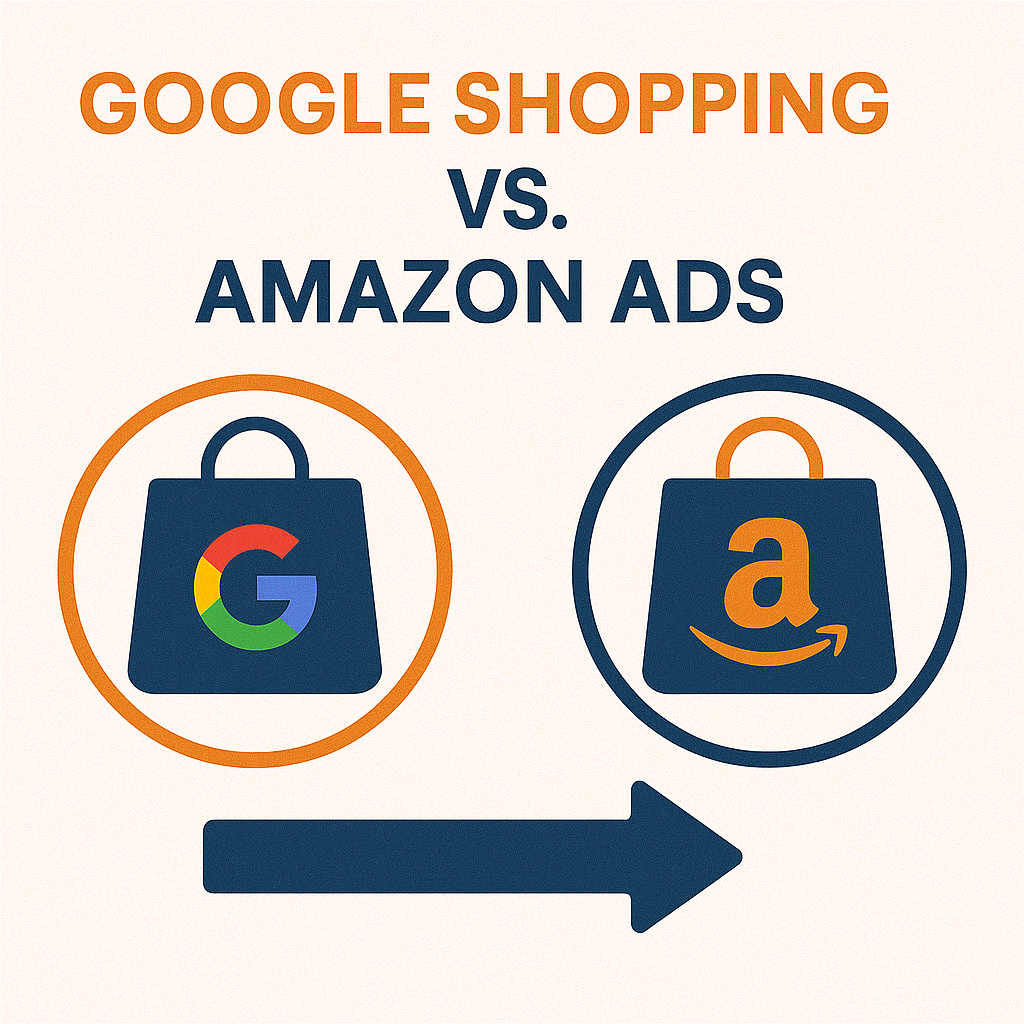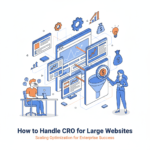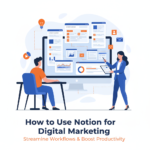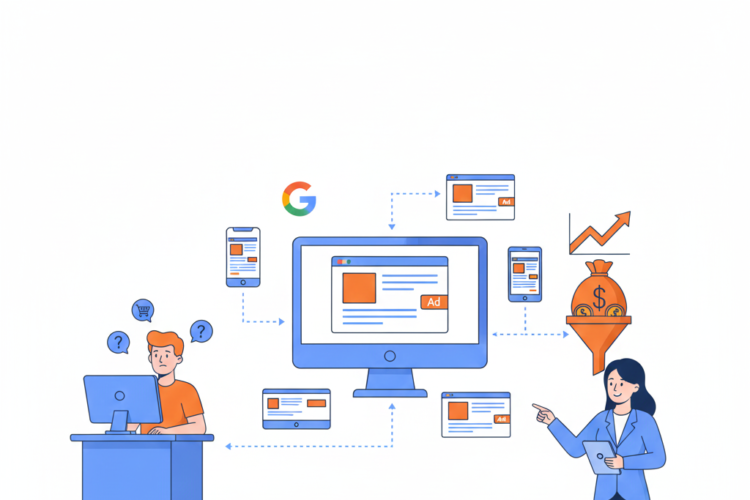
Google Shopping vs Amazon Ads (2025): A Complete Comparison Guide
In the world of eCommerce advertising, two titans dominate the landscape: Google Shopping Ads and Amazon Ads. Both platforms have unique strengths and serve different stages of the buyer journey. Choosing the right one — or using them together — can significantly influence your ROI, product visibility, and conversion rates.
Let’s explore the key differences, strengths, use cases, and optimization strategies for each platform.
📌 Table of Contents
-
What Are Google Shopping Ads?
-
What Are Amazon Ads?
-
Key Differences: Platform, Intent, Targeting
-
Comparison Table: Google Shopping vs Amazon Ads
-
Cost & ROI Comparison
-
Campaign Types Breakdown
-
Buyer Journey Analysis
-
When to Use Google, Amazon, or Both
-
2025 Best Practices
-
Final Verdict
🧾 1. What Are Google Shopping Ads?
Google Shopping Ads are visual product ads that appear across Google’s network, especially in:
-
Google Search results (product carousel)
-
Google Shopping tab
-
Google Images
-
YouTube (occasionally)
-
Gmail and Display Network
These ads are fed from a Google Merchant Center product feed, and they show product image, price, merchant, ratings, and more — helping users compare products before clicking.
🛍 Ideal for driving traffic to your eCommerce site and capturing top-to-mid funnel shoppers.
🛒 2. What Are Amazon Ads?
Amazon Ads are paid placements within the Amazon ecosystem. There are three main types:
-
Sponsored Products: Appear in search results and product pages
-
Sponsored Brands: Show your logo and a selection of products
-
Sponsored Display: Retarget or display your ads across Amazon and third-party sites
Amazon Ads work within a closed marketplace — users see and purchase your products without ever leaving Amazon.
🛒 Ideal for bottom-of-funnel conversions where users already have buying intent.
🧠 3. Key Differences: Platform, Intent, Targeting
| Aspect | Google Shopping Ads | Amazon Ads |
|---|---|---|
| Platform | Google search and partner network | Amazon marketplace |
| User Intent | Discovery, research, price comparison | High intent, ready-to-buy |
| Ad Destination | External website (your eCommerce store) | Amazon product detail page |
| Conversion Ownership | You own customer data | Amazon owns the transaction and data |
| SEO Dependency | Depends on Google’s algorithm + feed quality | Relies on Amazon’s A9 algorithm and reviews |
| Audience Targeting | Keywords, custom intent, demographic, geo | Keywords, product targeting, audience segments |
| Control Over Experience | Full control of landing page | Limited to Amazon’s product pages |
📊 4. Comparison Table: Google Shopping vs Amazon Ads
| Feature | Google Shopping | Amazon Ads |
|---|---|---|
| Customer Intent | Broad to transactional | Mostly transactional |
| Average CPC (2025) | ₹8 – ₹25 (depending on niche) | ₹15 – ₹40 (more competition) |
| Conversion Rate | 1.5% – 3% (site-dependent) | 6% – 10% (higher buying intent) |
| Customer Data | Full ownership | Limited access (Amazon keeps data) |
| Product Feed Quality | Critical (GMC optimization) | Critical (title, images, reviews, keywords) |
| Retargeting Options | Google Display Network, YouTube, RLSA | Sponsored Display, DSP |
| Ad Format Flexibility | Image + product info only | Display, video, headline ads |
| Fulfillment Control | Self-managed | Self-managed or FBA (Fulfilled by Amazon) |
| SEO Spillover | Strong potential (more visibility across search) | Limited to Amazon ecosystem |
| Product Review Control | On your site | Reviews tied to Amazon profile |
💰 5. Cost & ROI Comparison
Google Shopping:
-
Lower CPC (initially)
-
Higher funnel = Lower conversion rates
-
Better for branding and traffic
Amazon Ads:
-
Higher CPC, especially in competitive categories
-
Higher conversion rate
-
ROI depends on Buy Box control, reviews, and FBA
👉 If you want volume and traffic, Google Shopping wins.
👉 If you want sales and higher intent buyers, Amazon wins.
🧱 6. Campaign Types Breakdown
🟢 Google Shopping Campaigns
-
Standard Shopping: Control product groupings manually
-
Smart Shopping (Performance Max): Uses AI for optimization (no control)
-
YouTube and Display Campaigns: Use product feed for remarketing
-
Dynamic Remarketing: Show ads to past site visitors with products they viewed
🟠 Amazon Campaign Types
-
Sponsored Products: Most common — based on keywords or ASINs
-
Sponsored Brands: Showcase multiple products + brand logo
-
Sponsored Display: Great for retargeting
-
Amazon DSP: Programmatic display advertising with advanced targeting
🛍️ 7. Buyer Journey Funnel
| Funnel Stage | Google Shopping | Amazon Ads |
|---|---|---|
| Awareness | ✅ Strong via YouTube, GDN | ❌ Weak |
| Consideration | ✅ Price comparison, research | ✅ Customer reviews, comparison |
| Purchase | 🟡 Depends on site quality | ✅ Direct checkout |
| Repeat Loyalty | ✅ You own the user | ❌ Amazon keeps the user |
🧠 8. When to Use Google Shopping vs Amazon Ads
Use Google Shopping when:
-
You have a great website and product landing pages
-
You want to build your brand outside Amazon
-
You’re running an omnichannel strategy (email, remarketing, SEO)
-
You sell high-ticket items requiring comparison and research
Use Amazon Ads when:
-
You already sell on Amazon (or want to scale fast)
-
You need fast conversions
-
Your products rank well with strong reviews and Buy Box
-
You’re competing heavily in CPG, electronics, books, etc.
🧪 9. Best Practices for 2025
🔍 Google Shopping
-
Optimize your Google Merchant Center Feed
-
Use Performance Max campaigns with custom video creatives
-
Run Dynamic Remarketing
-
Monitor product disapprovals, feed errors
🛒 Amazon Ads
-
Focus on getting and managing reviews
-
Use A+ Content and Amazon Brand Store
-
Leverage Amazon Attribution if running off-platform ads
-
Split-test headlines, images, and bullet points
🧾 10. Final Verdict: Which Is Better?
| Scenario | Best Choice |
|---|---|
| New DTC Brand | Google Shopping (data control, brand visibility) |
| High-converting CPG brand | Amazon Ads (ready-to-buy audience) |
| Existing Amazon Store | Amazon Ads (maximize rankings, drive sales) |
| Cross-channel strategy | Both (Google for traffic, Amazon for sales) |
| High-margin product needing education | Google Shopping |
✨ Final Thoughts
Both Google Shopping and Amazon Ads are powerhouse eCommerce platforms — but they serve different purposes in the customer journey.
-
Google Shopping gives you flexibility, branding, and full-funnel control.
-
Amazon Ads give you speed, scale, and high-converting visibility within the world’s biggest marketplace.
Smart brands in 2025 are integrating both — using Google Shopping to drive discovery and Amazon Ads to convert buyers where they’re most likely to purchase.
Author



